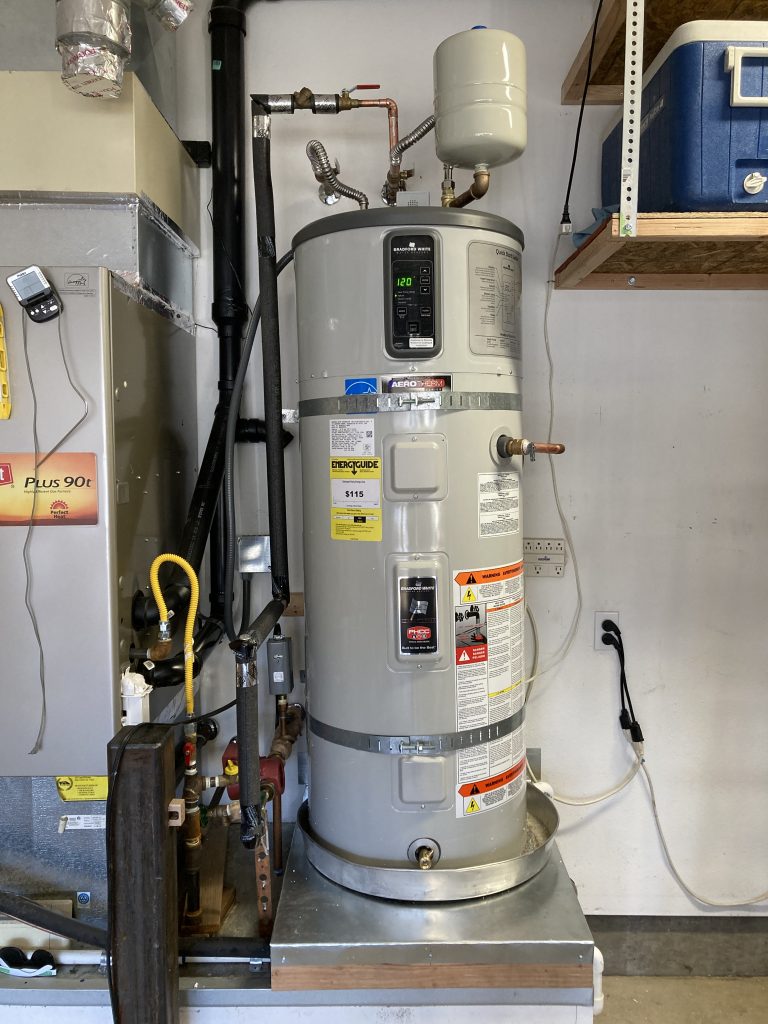
Isn’t she a beauty? What? You don’t think water heaters are sexy? Oh, but she is hot and super-efficient! I bet you’re wondering what is a “hybrid heat pump water heater”?
NOTE: This post has been updated as of May, 2025. Changes are in red.
A hybrid water heater, or heat pump water heater, uses heat from outside air drawn into the appliance’s evaporator coil. The evaporator coil contains refrigerant, allowing it to absorb heat from the air. Finally, a heat exchanger heats water within the tank to the desired temperature before it passes from the heater tank into your home’s showers, faucets, and large appliances.
This electric water heater uses heat from outside air drawn into the appliance’s evaporator coil. The evaporator coil contains refrigerant, allowing it to absorb heat from the air. Finally, a heat exchanger heats water within the tank to the desired temperature before it passes from the heater tank into your home’s showers, faucets, and large appliances. It’s helpful to think about this process as being like that of your refrigerator, but in reverse. Instead of expelling hot air to cool the contents of a refrigerator or freezer, a heat pump water heater pulls hot air in to heat the water. Because it moves heat, it is over 50% more efficient than a standard electric water heater.
Our water heater is a Bradford White Model #RE2H50S10. It has three settings: heat pump only, hybrid, and electric. The most efficient setting is the heat pump only, which works when the ambient temperature is higher and hot water demand is lower. The hybrid mode will use the heat pump and when it can’t find enough heat to move, it will create heat through heating elements (like a standard electric water heater). That is why it is called a hybrid. The electric mode is useful if you have a lot of people taking showers at one time. This mode uses the heating elements to keep up with the demand. Afterwards, you can reset it to hybrid or heat pump only, or it will default back to hybrid within 12 hours if you forget to reset it. It is expected to use 958 kWh per year of electricity. In our colder climate, we estimate we use about 1500 kWh to power this unit.
Did you know that your water heater is one of the most energy intensive systems in your home? According to the EPA, “If every residential electric water heater in the country were replaced with a heat-pump water heater, 140 billion pounds of annual greenhouse gas emissions would be prevented, equivalent to the emissions from more than 13 million vehicles.” Here’s a good article on the subject if you want to learn more: https://www.thisoldhouse.com/plumbing/21015567/all-about-heat-pump-water-heaters.
We chose this water heater so we could use more of our solar power and less natural gas to heat our water. This meant replacing our old natural gas system with an electric one. We were waiting until our 20-year-old gas water blew up, which it did over the winter. Fortunately, Scott had a backup on hand to get us through until our hybrid could be produced and shipped to us (took about a month due to Covid, but you can get one from another manufacturer at Home Depot or Lowes immediately). Thankfully, Scott was able to install the 220-volt circuit himself and our friend, Brad helped with the installation of the tank. So, our labor costs are less than normal for making this switch.
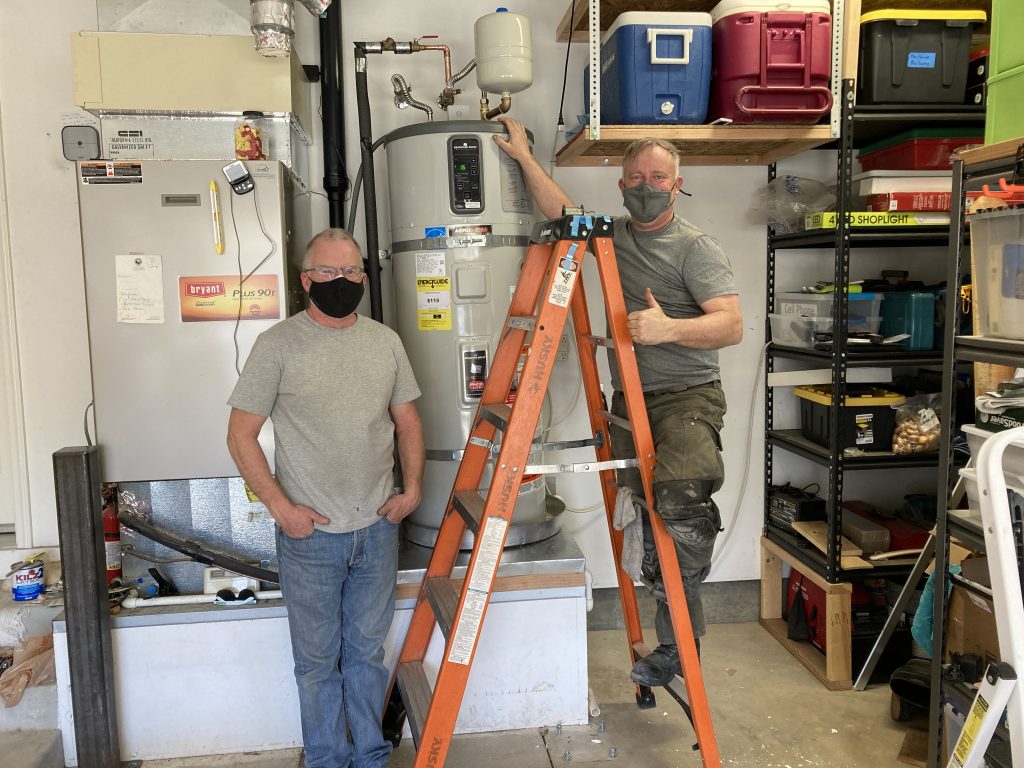
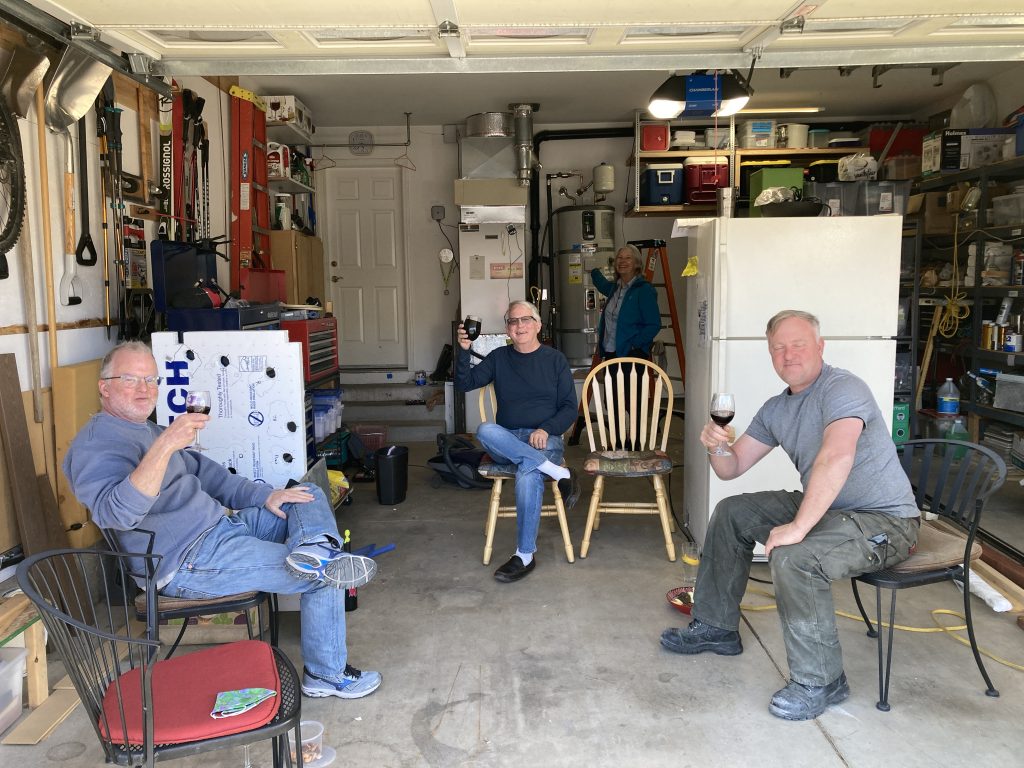
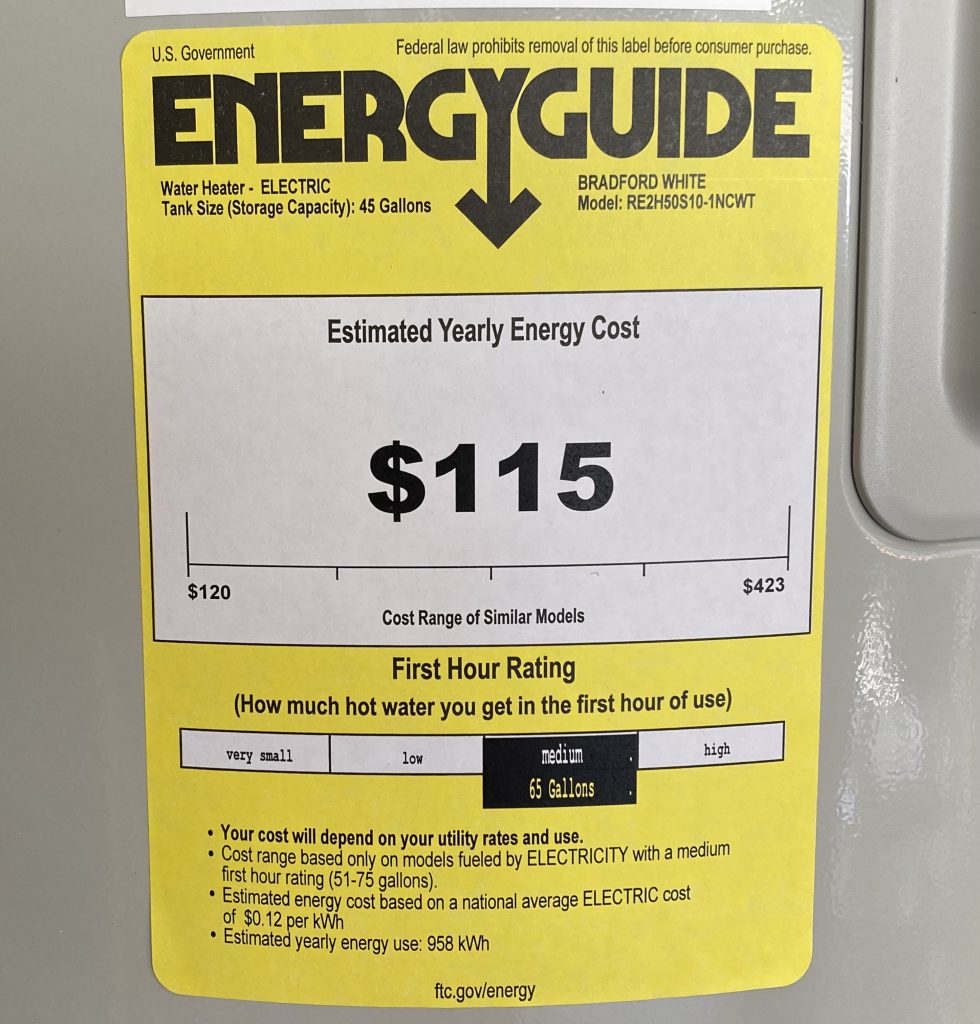
Here are the costs:
- $1,428 Bradford White Model #RE2H50S10
- +$600 Labor for Installation
- =$2,028 Total
- -$700 Less Cost to replace with a new gas water heater
- -$300 Less Federal Tax Rebate
- =$1,028 Additional cost of switching to a hybrid electric water heater
We will add this to our solar installation costs and see how long it takes us to recover our investment. However, our main reason for choosing this system is to reduce our carbon footprint by burning less natural gas to heat our water.
Our heat pump water heater has been saving us about 235 therms of gas per year. Our average gas cost is about $0.69 per therm. So we save about $162 per year. That means the system will pay for itself in about 6 years. We hope it will last 20 years like the last one did-then we come out way ahead!
You might be wondering what a heat pump water heater can save your household. For a family of four, the Energy Star website estimates you would save around $330 a year on your electric bill, which adds up to a savings of around $3,400 over the life of a typical heat pump water heater (this makes sense given our use for 2 people). An average new electric hot water heater costs between $300 and $600. If you already have an electric hot water heater, the additional cost (less the federal tax rebate) is only $500-$800 more. This would be paid for by your savings within 1.5-3 years. Plus, it’s so much better for the environment! (Ours was more expensive because we had to switch from gas to electric.)
Next month, when we get our utility bill, I’ll post our gas savings from making this change. (See above)
Additional Information About Our Hot Water System
We are lucky to have a circulation pump system in our home, which helps us use less water. This system gives us instant hot water, so we don’t have to run a lot of cold water through the pipes, waiting for it to get hot. In our desert climate, where water is so precious, it is nice to have. Depending on your home’s construction, it can be added, but it is easier to do during new home construction. If you are building a new home, this is something worth considering.
Here’s Scott’s explanation and diagrams on how this works:
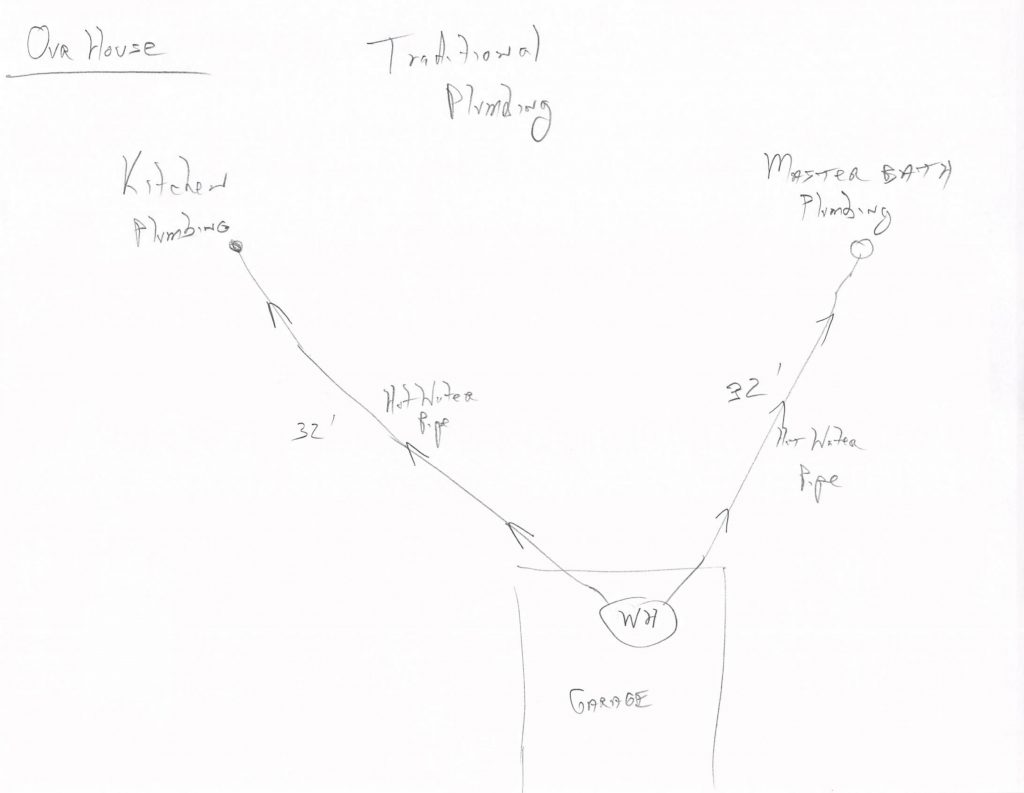
This is our house if we had a traditional hot water system. The hot water heater (HWH) is in the garage and there would be plumbing that extends, one way, from the HWH to wherever hot water is needed. In our case, the master bathroom and the kitchen. (For simplicity forget that we have a laundry room and a guest bathroom.) If we turn the hot water on in either of these locations after not using it for an hour or two, the water coming out is cold, so we have to run the hot water for a minute or two before it becomes warm then hot.
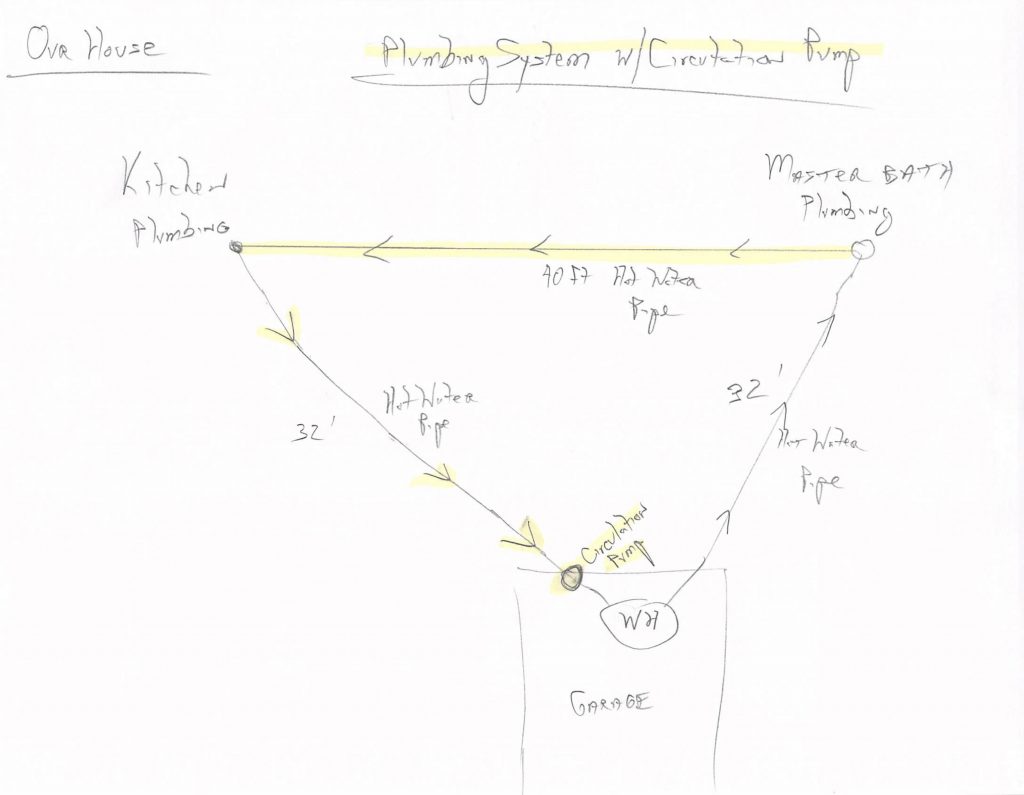
This is how our house was built. There is an extra hot water line (in yellow) that runs from the Master to the Kitchen. This creates a hot water loop. There is a hot water circulation pump next to the HWH (red device in this “Circulation Pump” picture):
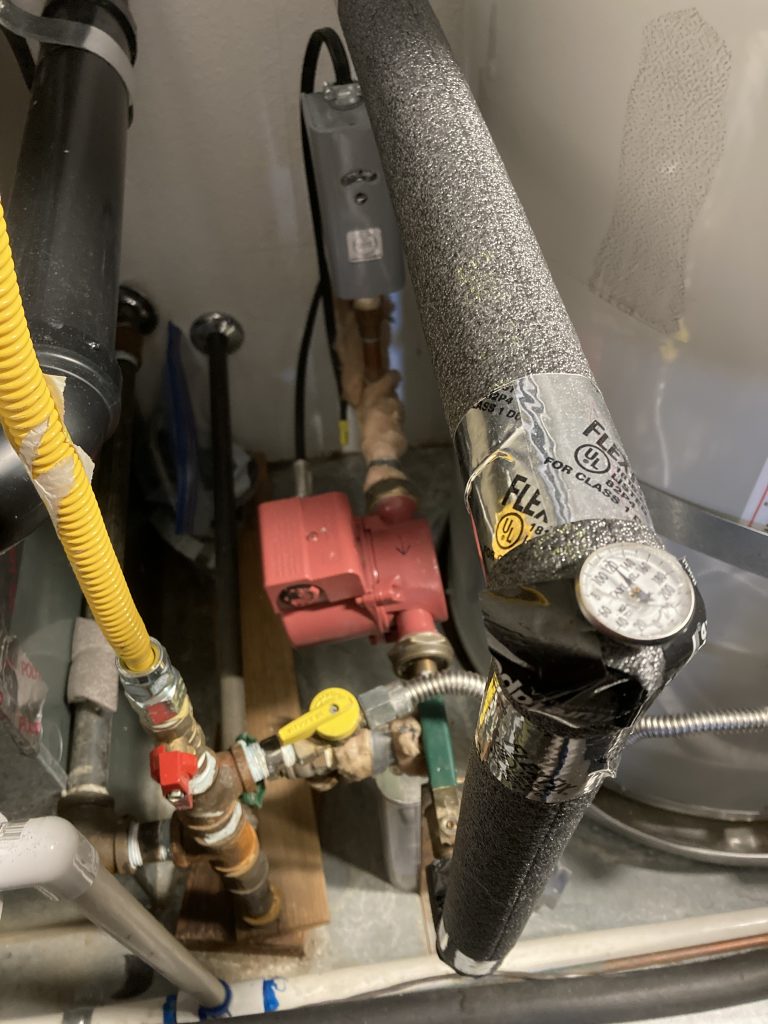
It continuously circulates the hot water through the loop and then through the HWH. Anytime we turn the hot water on in the Master or Kitchen, the hot water is piping hot. We do not have to wait. This system is good in deserts like Nevada where water is not abundant. We do not want people to let precious water run down the drain waiting for it to get hot.
Scott has the timer set so the pump is off at night when we are not using hot water.
Bottom Line After Four Years of Use
We love this heat pump! It is our favorite heat pump system and has reduced our use of natural gas the most and saved us the most money. It works as well as our old system did to heat our water, and an extra benefit is it cools off our garage in the summer by taking the hot air and putting it into the water. Very cool!
NOTE: This system does make some noise, so it is probably not a great system to have in the house where you can hear it. It works great in the garage.